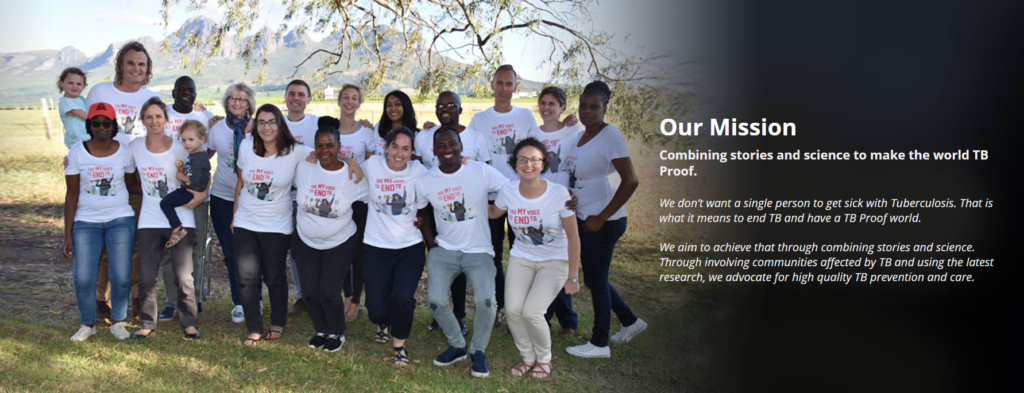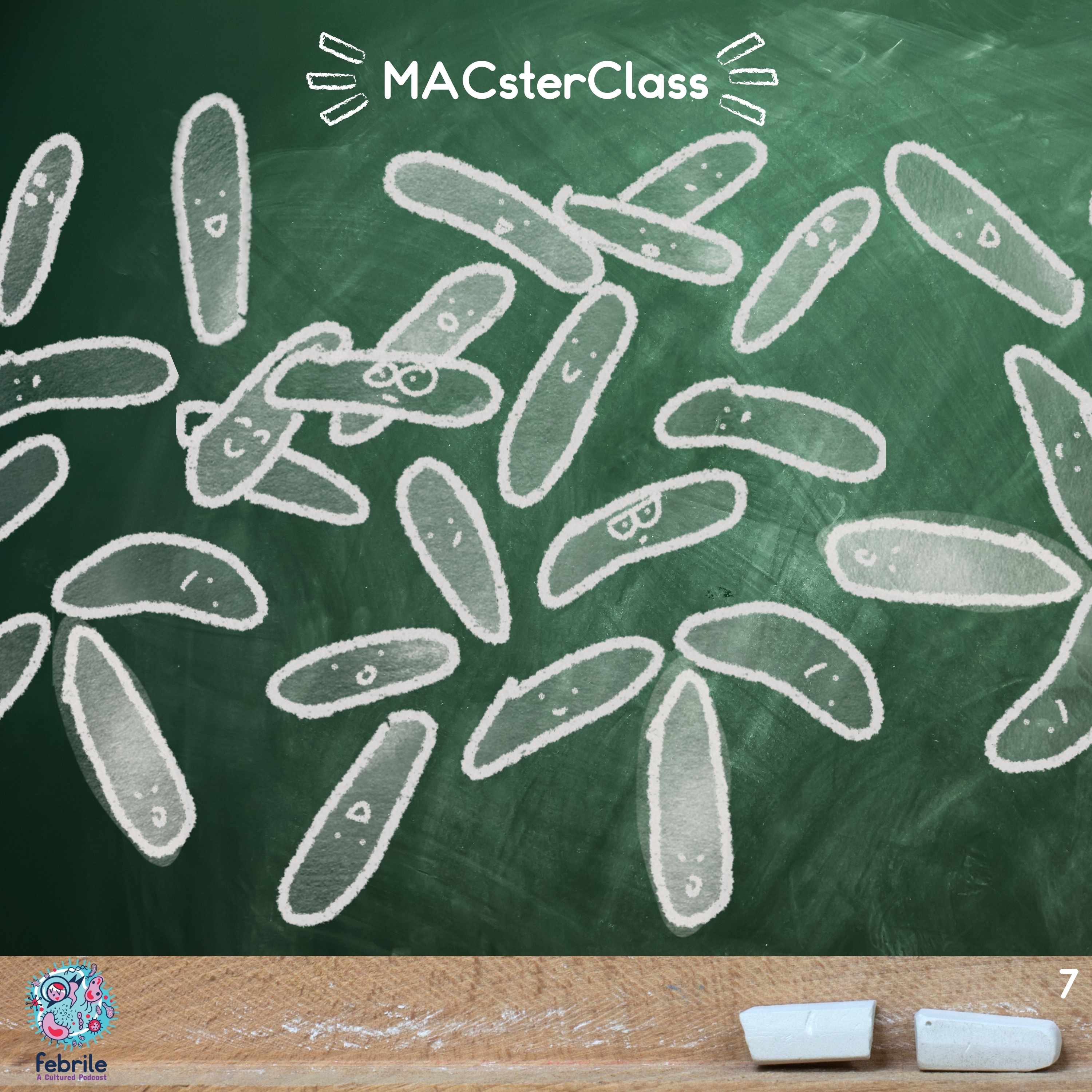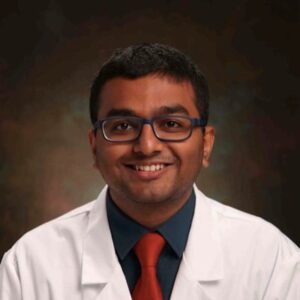Credits
Host: Sara Dong
Guest: Ruvandhi Nathavitharana
Writing: Kushal Vaishnani, Sara Dong
Producing/Editing/Cover Art: Sara Dong
Infographics: Sara Dong
Dr. Ruvandhi Nathavitharana is an attending physician in Infectious Diseases at Beth Israel Deaconess Medical Center and an Assistant Professor at Harvard Medical School. Dr. Nathavitharana’s clinical efforts are focused on the longitudinal, multidisciplinary care of patients with TB and non-tuberculous mycobacteria. Dr. Nathavitharana’s research interests center around the use of implementation science to evaluate TB diagnostic algorithms and interventions to decrease TB transmission in high TB incidence countries with a focus on Peru and South Africa, funded by an NIH K23 Career Development Award and ASTMH Burroughs Wellcome Fellowship. Dr. Nathavitharana has served as a technical expert analyzing data to inform WHO guideline development group panel recommendations on the use of line probe assays and the urine LAM lipoarabinomannan test for the diagnosis of TB. Dr. Nathavitharana is also the Chair of TB Proof, an advocacy organization based in South Africa that seeks to destigmatize TB and mobilize national and global resources to end TB. Check out some Op-Eds written by Dr. Nathavitharana and colleagues focused on centering the perspectives of TB survivors and supporting the essential role of community health workers.

Dr. Kushal Vaishnani is a hospitalist in North Carolina with an interest in infectious diseases and clinical reasoning
Consult Notes
Consult Q
Request for help with working up a pt with COPD and UC on infliximab with weight loss and cough
One-liner
61 yo female with history of COPD and ulcerative colitis on infliximab who presented with cough, dyspnea, and weight loss and was found to have pulmonary M.avium infection
Key Points
Nontuberculous mycobacteria (NTM) species are a collection of >200 mycobacterial spp other than those belonging to M.tuberculosis complex (M.tuberculosis, M.bovis, M.africanum, M.microti) and M.leprae. They are ubiquitous in the environment.
- Clinical syndromes due to NTM can be classified by:
- Pulmonary disease
- Superficial lymphadenitis, especially cervical lymphadenitis in children
- Disseminated disease in severely immunocompromised patients
- Skin and soft tissue infection
- We focused on pulmonary disease for this episode!
A little on the epidemiology of NTM infections
- We know NTM infections are on the rise in the US, especially in the Southeast. No systematic monitoring or reporting to inform epidemiology, but estimated incidence ~12/100k
- Most common NTM causing disease in US = MAC, M.kansasii, M.abscessus subspecies abscessus
- Factors for disease susceptibility are not understood, but genetic and environmental factors are likely implicated
- Organisms are thought to be acquired from the environment, potentially from municipal water sources (e.g. showers). Unlike M.tuberculosis, there are no convincing data for human-to-human or animal-to-human transmission
- Mullis SN, Falkinham JO 3rd. Adherence and biofilm formation of Mycobacterium avium, Mycobacterium intracellulare and Mycobacterium abscessus to household plumbing materials. J Appl Microbiol. 2013;115(3):908-914. doi:10.1111/jam.12272
- Wallace RJ Jr, Iakhiaeva E, Williams MD, et al. Absence of Mycobacterium intracellulare and presence of Mycobacterium chimaera in household water and biofilm samples of patients in the United States with Mycobacterium avium complex respiratory disease. J Clin Microbiol. 2013;51(6):1747-1752. doi:10.1128/JCM.00186-13
- Falkinham JO 3rd. Reducing human exposure to Mycobacterium avium. Ann Am Thorac Soc. 2013;10(4):378-382. doi:10.1513/AnnalsATS.201301-013FR
- Here are a few resources for NTM epi in the US:
- Nontuberculous Mycobacteria–associated Lung Disease in Hospitalized Persons, United States, 1998–2005
- Donohue MJ, Wymer L. Increasing Prevalence Rate of Nontuberculous Mycobacteria Infections in Five States, 2008-2013. Ann Am Thorac Soc. 2016;13(12):2143-2150. doi:10.1513/AnnalsATS.201605-353OC
- Jones MM, Winthrop KL, Nelson SD, et al. Epidemiology of nontuberculous mycobacterial infections in the U.S. Veterans Health Administration. PLoS One. 2018;13(6):e0197976. Published 2018 Jun 13. doi:10.1371/journal.pone.0197976
A few pediatric notes related to NTM:
- The predominant NTM disease in children is cervical lymphadenitis (MAC, M.scrofulaceum) and cutaneous disease (M.marinum, M.ulcerans)
- For NTM lymphadenitis in otherwise healthy children, surgical excision is curative and limits scar formation
- NTM pulmonary disease in children usually affects those with underlying lung disease such as cystic fibrosis. Typical spp would be MAC and M.abscessus
- Disseminated NTM infections are associated with impaired cell-mediated immunity, such as that found in children with congenital immune defects (eg, IL-12 deficiency, NEMO mutation and related disorders, IFNg receptor defects), HSCT, advanced HIV.
Diagnosis of pulmonary NTM disease = combination of clinical criteria and micro assessment
The ATS/IDSA criteria was recently updated in 2020:
- Daley CL, Iaccarino JM, Lange C, et al. Treatment of Nontuberculous Mycobacterial Pulmonary Disease: An Official ATS/ERS/ESCMID/IDSA Clinical Practice Guideline. Clin Infect Dis. 2020;71(4):905-913. doi:10.1093/cid/ciaa1125
- Clinical: consistent pulmonary or systemic symptoms
- Signs and symptoms are variable and influenced by whether patient has pre-existing symptomatic lung disease
- Cough, fatigue, malaise, weakness, dyspnea, chest discomfort, sometimes hemoptysis
- Fever, weight loss can occur, although less than in TB
- Radiographic:
- chest radiograph with nodular or cavitary opacities or
- high-resolution computed tomography (HRCT) with multifocal bronchiectasis with multiple nodules.
- Microbiologic (assess over time):
- Two positive sputum cultures from two separate expectorated sputum samples OR
- One positive bronchial washing or BAL specimen positive for NTM OR
- Pathology/histologic features consistent with NTM infection (granulomatous inflammation; +AFB) in combination with 1 or more culture positive pulmonary specimens (e.g. lung biopsy)
- Positive culture from pleural fluid or any other normally sterile extrapulmonary site
- AND Exclusion of other diseases (TB, malignancy)
- Should have clinical and radiographic criteria with at least one micro criteria
- NTM are environmental organisms → it can be difficult to distinguish transient infection, colonization, lab/specimen contamination, true infection/disease, pseudo-outbreaks
- **Isolation of NTM in a single sputum culture without (and sometimes even with) associated clinical and radiographic features does not establish a diagnosis of pulmonary disease
- Especially in patients with co-morbidities such as CF
- **Just because a patient meets diagnostic criteria for NTM pulmonary disease does not necessarily mean they need antibiotics
- Patients need close longitudinal follow-up and repeat sampling
- You can check out some other guideline resources in the “Other miscellaneous” section
This episode featured a case of Mycobacterium avium complex, which includes multiple species. Previously MAC was thought to include M.avium and M.intracellulare only.
- M.avium
- M.intracellulare
- M.chimaera
- M.colombiense
- M.arosiense
- M.marseillense
- M.timonense
- M.bouchedurhonense
- M.vulneris
- M.yongonense
A few micro details on MAC:
- Slowly growing
- Readily detected by AFB smear and culture
- Grows well in standard media such as MGIT broth, Middlebrook 7H10 and 7H11 agar
- In broth, these organisms do not show clustering or “cording”
- On agar: usually small, flat, translucent, smooth colonies +/- pale yellow color
- These are different than M.tuberculosis, which would show cording in broth with rough, buff colored colonies on agar
Does the NTM species matter in terms of outcomes like cure?
- Having subspp can be helpful in MAC if available. Might not change management but may help understanding possible severity / risk of more advanced disease, different risks of clinical recurrence
- Lab (MALDI-TOF) often identifies M.chimaera/intracellulare complex
- Pathogenicity: M.intracellulare > M.avium > M.chimaera
- M.intracellulare presents with more advanced disease
- M.chimaera and M.avium have higher rate of clinic recurrence
- Significance of mixed strain dz not clearly understood
- Overall MAC cure rates 60-80%
- Tortoli E. Microbiological features and clinical relevance of new species of the genus Mycobacterium. Clin Microbiol Rev. 2014;27(4):727-752. doi:10.1128/CMR.00035-14
- Boyle DP, Zembower TR, Reddy S, Qi C. Comparison of Clinical Features, Virulence, and Relapse among Mycobacterium avium Complex Species. Am J Respir Crit Care Med. 2015;191(11):1310-1317. doi:10.1164/rccm.201501-0067OC
So how do you decide to treat NTM?
- As Ruvandhi discussed, the decision involves consideration of a constellation of clinical sxs, radiographic changes, microbiologic evidence, other comorbidities like immunosuppression, spp isolated
- Weighing risk/benefit ratio carefully (drug toxicities, prolonged duration of therapy, comorbidities, goals of therapy)
- Decision often not made at a single timepoint
Do I need to get drug susceptibility testing? How do I interpret DST results?
- In patients with MAC pulmonary disease, the AST/IDSA 2020 guidelines recommend susceptibility-based treatment for macrolides and amikacin over empiric therapy
- Currently established breakpoint concentrations have very limited clinical evidence base
- Aside from macrolide (and aminoglycoside) susceptibility, there is little evidence to correlate DST with clinical outcomes
- Discrepancies between drug susceptibility in vitro and activity of drug observed in vivo
- However DST may facilitate Rx choices
- Synergy testing is sometimes available
- Currently performed for rifampin and ethambutol
- May also see results for amikacin and clofazamine
We focused on approaching therapy for MAC specifically this episode. Ruvandhi walked us through how many drugs we need and a few other treatment related learning points!
- For initial treatment of MAC pulmonary disease → would choose a 3-drug regimen containing:
- Macrolide: preferred is Azithromycin (most patients will have macrolide-susceptible MAC)
- Rifamycin: preferred is Rifampin
- Ethambutol
- If patients have cavitary or severe nodular bronchiectatic disease or macrolide-resistant MAC, would add an parenteral aminoglycoside in initial phase of treatment
Did you know that macrolide susceptibility has been a consistent predictor of treatment success for pulmonary MAC? Loss of macrolide from treatment regimen is associated with markedly reduced rate of conversion of sputum cultures to negative and higher mortality
- Morimoto K, Namkoong H, Hasegawa N, et al. Macrolide-Resistant Mycobacterium avium Complex Lung Disease: Analysis of 102 Consecutive Cases. Ann Am Thorac Soc. 2016;13(11):1904-1911. doi:10.1513/AnnalsATS.201604-246OC
- Griffith DE, Brown-Elliott BA, Langsjoen B, et al. Clinical and molecular analysis of macrolide resistance in Mycobacterium avium complex lung disease. Am J Respir Crit Care Med. 2006;174(8):928-934. doi:10.1164/rccm.200603-450OC
- Moon SM, Park HY, Kim SY, et al. Clinical Characteristics, Treatment Outcomes, and Resistance Mutations Associated with Macrolide-Resistant Mycobacterium avium Complex Lung Disease. Antimicrob Agents Chemother. 2016;60(11):6758-6765. Published 2016 Oct 21. doi:10.1128/AAC.01240-16
Covering some key questions regarding MAC treatment
Macrolides are a critical component of MAC therapy. The new guidelines now favor azithromycin over clarithromycin. Why?
- Advantages of Azithro over Clarithro:
- Daily vs BID dosing
- Better tissue penetration
- Fewer side effects
- Fewer drug interactions
- Less metabolism by rifamycins
- van Ingen J, Egelund EF, Levin A, et al. The pharmacokinetics and pharmacodynamics of pulmonary Mycobacterium avium complex disease treatment. Am J Respir Crit Care Med. 2012;186(6):559-565. doi:10.1164/rccm.201204-0682OC
- Haworth CS, Banks J, Capstick T, et al. British Thoracic Society guidelines for the management of non-tuberculous mycobacterial pulmonary disease (NTM-PD). Thorax. 2017;72(Suppl 2):ii1-ii64. doi:10.1136/thoraxjnl-2017-210927
- Advantages of Azithro over Clarithro:
How do we choose daily vs intermittent therapy?
- The treatment regimen can be given daily vs 3-times-weekly. Guidelines suggest that 3-times-weekly dosing is reasonable for noncavitary macrolide-susceptible MAC pulmonary disease → but daily was suggested for cavitary or severe/advanced disease
- A pro of daily dosing: it is more forgiving re: missed doses, can scale back
- Intermittent dosing has less toxicity but should not be used for cavitary disease
- Intermittent therapy has similar sputum conversion rates as daily therapy for nodular/bronchiectatic MAC pulmonary disease
- Jeong BH, Jeon K, Park HY, et al. Intermittent antibiotic therapy for nodular bronchiectatic Mycobacterium avium complex lung disease. Am J Respir Crit Care Med. 2015;191(1):96-103. doi:10.1164/rccm.201408-1545OC
- Retrospective study of 217 pts with rx-naive nodular bronchiectatic pulmonary MAC in SK
- Daily (n=99) vs TIW (n=118): CLARI/AZI, RIF, EMB
- Jeong BH, Jeon K, Park HY, et al. Intermittent antibiotic therapy for nodular bronchiectatic Mycobacterium avium complex lung disease. Am J Respir Crit Care Med. 2015;191(1):96-103. doi:10.1164/rccm.201408-1545OC
Can we use two drugs vs three drugs for MAC? Guidelines still recommend 3-drug because we don’t really have enough data on 2-drugs. You can read what we have available below:
- Miwa S, Shirai M, Toyoshima M, et al. Efficacy of clarithromycin and ethambutol for Mycobacterium avium complex pulmonary disease. A preliminary study. Ann Am Thorac Soc. 2014;11(1):23-29. doi:10.1513/AnnalsATS.201308-266OC
- Open-label study of 119 pts with pulm MAC randomized to CLARI/EMB/RIF vs CLARI/EMB
- Culture conversion in 55% (2drugs) vs 41% (3drugs)
- AEs leading to d/c 27% (2drugs) vs 37% (3drugs)
- A project in progress — PCORI RCT evaluating AZI/EMB/RIF vs AZI/EMB: https://www.pcori.org/research-results/2018/using-two-versus-three-antibiotics-treat-mac-lung-infections
- Miwa S, Shirai M, Toyoshima M, et al. Efficacy of clarithromycin and ethambutol for Mycobacterium avium complex pulmonary disease. A preliminary study. Ann Am Thorac Soc. 2014;11(1):23-29. doi:10.1513/AnnalsATS.201308-266OC
Of course the most anticipated question from your patient – how long do we treat? What informs treatment duration?
- Guidelines suggest at least 12 months after culture conversion (conditional recommendation, v low certainty in effect estimates), but really we don’t know the optimal duration
- Clinical and microbiologic reassessment is key
What about newer drugs we are using or might be on the horizon? How effective are they?
- Until recently clofazamine (from FDA through SPIND, now Novartis through multi-patient IND) was the only oral drug with favorable susceptibilities
- Mechanism? Riminophenazine, accumulates in macrophages
- Jarand J, Davis JP, Cowie RL, Field SK, Fisher DA. Long-term Follow-up of Mycobacterium avium Complex Lung Disease in Patients Treated With Regimens Including Clofazimine and/or Rifampin. Chest. 2016;149(5):1285-1293. doi:10.1378/chest.15-0543
- Retrospective review of 107 adults with pulmonary MAC: 79% female, 54% smear positive
- 84% CFZ/macrolide/EMB
- 13% RIF/macrolide/EMB
- Higher proportion achieving culture conversion (p=0.0002 suggests CFZ = RIF)
- Bedaquiline?
- Mechanism? Diarylquinolone, inhibits mycobacterial ATP synthetase
- In vitro: majority MAC and most MAbc susceptible
- Common side effects: nausea (60%), arthralgias (40%), anorexia and subjective fever (30%)
- No abnormal ECG findings
- Brown-Elliott BA, Philley JV, Griffith DE, Thakkar F, Wallace RJ Jr. In Vitro Susceptibility Testing of Bedaquiline against Mycobacterium avium Complex. Antimicrob Agents Chemother. 2017;61(2):e01798-16. Published 2017 Jan 24. doi:10.1128/AAC.01798-16
- Philley JV, Wallace RJ Jr, Benwill JL, et al. Preliminary Results of Bedaquiline as Salvage Therapy for Patients With Nontuberculous Mycobacterial Lung Disease. Chest. 2015;148(2):499-506. doi:10.1378/chest.14-2764
- Case series of 10 patients: 6 MAC, 4 MAbc
- 80% macrolide-R, all on Rx prior to BDQ (1-8 yrs Rx)
- After 6m rx, 60% of pts had micro response with 50% having >=1 negative cx
- Omadacycline? Eravacycline?
- Omadacycline (PO) and eravacycline (IV) similar in vitro
- Concentration dependent effect: tige > omada but omadacycline has higher free active fraction
- Healthy volunteers: 2.4% nausea w/omadacycline vs 47.6% with tigecycline group and vomiting in 0% vs 14.3%
- Phase 3 trials had more GI TEAEs but rarely led to d/c
- Kaushik A, Ammerman NC, Martins O, Parrish NM, Nuermberger EL. In Vitro Activity of New Tetracycline Analogs Omadacycline and Eravacycline against Drug-Resistant Clinical Isolates of Mycobacterium abscessus. Antimicrob Agents Chemother. 2019;63(6):e00470-19. Published 2019 May 24. doi:10.1128/AAC.00470-19
- Gotfried MH, Horn K, Garrity-Ryan L, et al. Comparison of Omadacycline and Tigecycline Pharmacokinetics in the Plasma, Epithelial Lining Fluid, and Alveolar Cells of Healthy Adult Subjects. Antimicrob Agents Chemother. 2017;61(9):e01135-17. Published 2017 Aug 24. doi:10.1128/AAC.01135-17
- Liposomal inhaled amikacin (Arikayce) FDA approved for refractory MAC
- Inhaled amikacin often used as additional agent
- Yagi K, Ishii M, Namkoong H, et al. The efficacy, safety, and feasibility of inhaled amikacin for the treatment of difficult-to-treat non-tuberculous mycobacterial lung diseases. BMC Infect Dis. 2017;17(1):558. Published 2017 Aug 9. doi:10.1186/s12879-017-2665-5
- 26 patient case series from Japan (23 with MAC)
- 10/23 (43.5%, 8MAC) who received inhaled AMK showed sputum conversion (3 negative cxs)
- Serum AMK trough levels before the second inhalation were <1.2 ug/mL in all 26 pts
- No severe adverse events, such as renal toxicity. One pt (3.8%) experienced reversible auditory toxicity in form of tinnitus
- Jhun BW, Yang B, Moon SM, et al. Amikacin Inhalation as Salvage Therapy for Refractory Nontuberculous Mycobacterial Lung Disease. Antimicrob Agents Chemother. 2018;62(7):e00011-18. Published 2018 Jun 26. doi:10.1128/AAC.00011-18
- 77 pts in Korea, showed 38% adverse effects including ototoxicity
- Griffith DE, Eagle G, Thomson R, et al. Amikacin Liposome Inhalation Suspension for Treatment-Refractory Lung Disease Caused by Mycobacterium avium Complex (CONVERT). A Prospective, Open-Label, Randomized Study. Am J Respir Crit Care Med. 2018;198(12):1559-1569. doi:10.1164/rccm.201807-1318OC
How do patients do with these regimens?
- Adherence is poor
- Only 13% of antibiotic regimens prescribed to patients with MAC met ATS/IDSA guidelines
How to approach treatment adverse effects in patients on combination therapy
- Consider staggered initial introduction of antibiotics
- With side effects – if no likely culprit, can stop all and attempt slow staggered re-introduction
- Consider in-class switch (rifamycins), adjust doses or timing of day, review drug interactions
- Specific strategies depending on drug (e.g. give bronchodilator prior to Arikayce, gargle warm water after, consider forgoing loading dose for omadacycline)
- Collaborate with your ID PharmD!
What about other management options in addition to antimycobacterial drugs?
What is the role of surgery for pulmonary NTM disease?
- Surgery is typically recommended in 3 situations:
- Failure of medical therapy, particularly if drug resistance
- Management of complication (e.g. refractory hemoptysis)
- To limit or slow down progression of disease
- Ideally minimally invasive, used for focal disease
- Timing of surgery is also unclear
- Read more considerations here: Mitchell JD. Surgical approach to pulmonary nontuberculous mycobacterial infections. Clin Chest Med. 2015;36(1):117-122. doi:10.1016/j.ccm.2014.11.004
- Surgery is typically recommended in 3 situations:
What other measures do you recommend when caring for these pts?
- Aggressive management of bronchiectasis – airway clearance interventions
- Chest PT
- Acapella valve
- Aerobika valve
- Bronchiectasis vest
- Evaluation for and management of GERD (e.g. barium swallow, esophagram, pH impedance study)
- Lifestyle factors: obesity, diet, elevating HOB
- Surgery for hiatal hernia/fundoplication
- PPI
- Basavaraj A, Segal L, Samuels J, et al. Effects of Chest Physical Therapy in Patients with Non-Tuberculous Mycobacteria. Int J Respir Pulm Med. 2017;4(1):065. doi:10.23937/2378-3516/1410065
- Chalmers JD, Chotirmall SH. Bronchiectasis: new therapies and new perspectives. Lancet Respir Med. 2018;6(9):715-726. doi:10.1016/S2213-2600(18)30053-5
- Aggressive management of bronchiectasis – airway clearance interventions
One of Ruvandhi’s key points was that management of NTM disease requires longitudinal partnerships with your patient and other members of the medical team. In addition, management should be framed as a chronic disease that is individualized to specific goals of therapy
Other miscellaneous mentions and notes:
- Other NTM guidelines and resources:
- Haworth CS, Banks J, Capstick T, et al. British Thoracic Society guidelines for the management of non-tuberculous mycobacterial pulmonary disease (NTM-PD). Thorax. 2017;72(Suppl 2):ii1-ii64. doi:10.1136/thoraxjnl-2017-210927
- Floto RA, Olivier KN, Saiman L, et al. US Cystic Fibrosis Foundation and European Cystic Fibrosis Society consensus recommendations for the management of non-tuberculous mycobacteria in individuals with cystic fibrosis. Thorax. 2016;71 Suppl 1(Suppl 1):i1-i22. doi:10.1136/thoraxjnl-2015-207360
- Longworth SA, Daly JS; AST Infectious Diseases Community of Practice. Management of infections due to nontuberculous mycobacteria in solid organ transplant recipients-Guidelines from the American Society of Transplantation Infectious Diseases Community of Practice. Clin Transplant. 2019;33(9):e13588. doi:10.1111/ctr.13588
- Help! My patient’s sputum is growing a species of NTM I’ve never heard of!
- Check out this paper looking at clinical relevance of different NTM
- van Ingen J, Bendien SA, de Lange WC, et al. Clinical relevance of non-tuberculous mycobacteria isolated in the Nijmegen-Arnhem region, The Netherlands. Thorax. 2009;64(6):502-506. doi:10.1136/thx.2008.110957
- National Jewish has many resources, particularly for patients, on their website. Here is one of their infographics on NTM:
- A Thousand Words Gallery
- Like textbook references?
- Mandell, Principles and Practice of ID, 8th Ed., 9th Ed.:
- Chapter 253: Mycobacterium avium complex
- Long, Principles and Practice of Pediatric ID, 5th Ed.:
- Chapter 135: Mycobacterium Nontuberculosis Species
- Comprehensive Review of Infectious Diseases
- Mandell, Principles and Practice of ID, 8th Ed., 9th Ed.:
Episode Art & Infographics
Goal
Listeners will be able to diagnose and start initial treatment in a patient with pulmonary MAC
Learning Objectives
After listening to this episode, listeners will be able to:
- Describe epidemiology of non-tuberculous mycobacteria (NTM) in the US
- Utilize available diagnostic criteria for pulmonary NTM disease
- List the key drugs in initial treatment of pulmonary Mycobacterium avium pulmonary disease
- Understand possible role of surgery and non-pharmacologic interventions for pulmonary NTM disease
Disclosures
Our guest (Ruvandhi Nathavitharana) as well as Febrile podcast and hosts report no relevant financial disclosures
Citation
Nathavitharana, R., Dong, S. “#7: MACsterclass”. Febrile: A Cultured Podcast. https://player.captivate.fm/episode/04eca175-4618-4f62-b2cc-ed8b4b05a3b4





